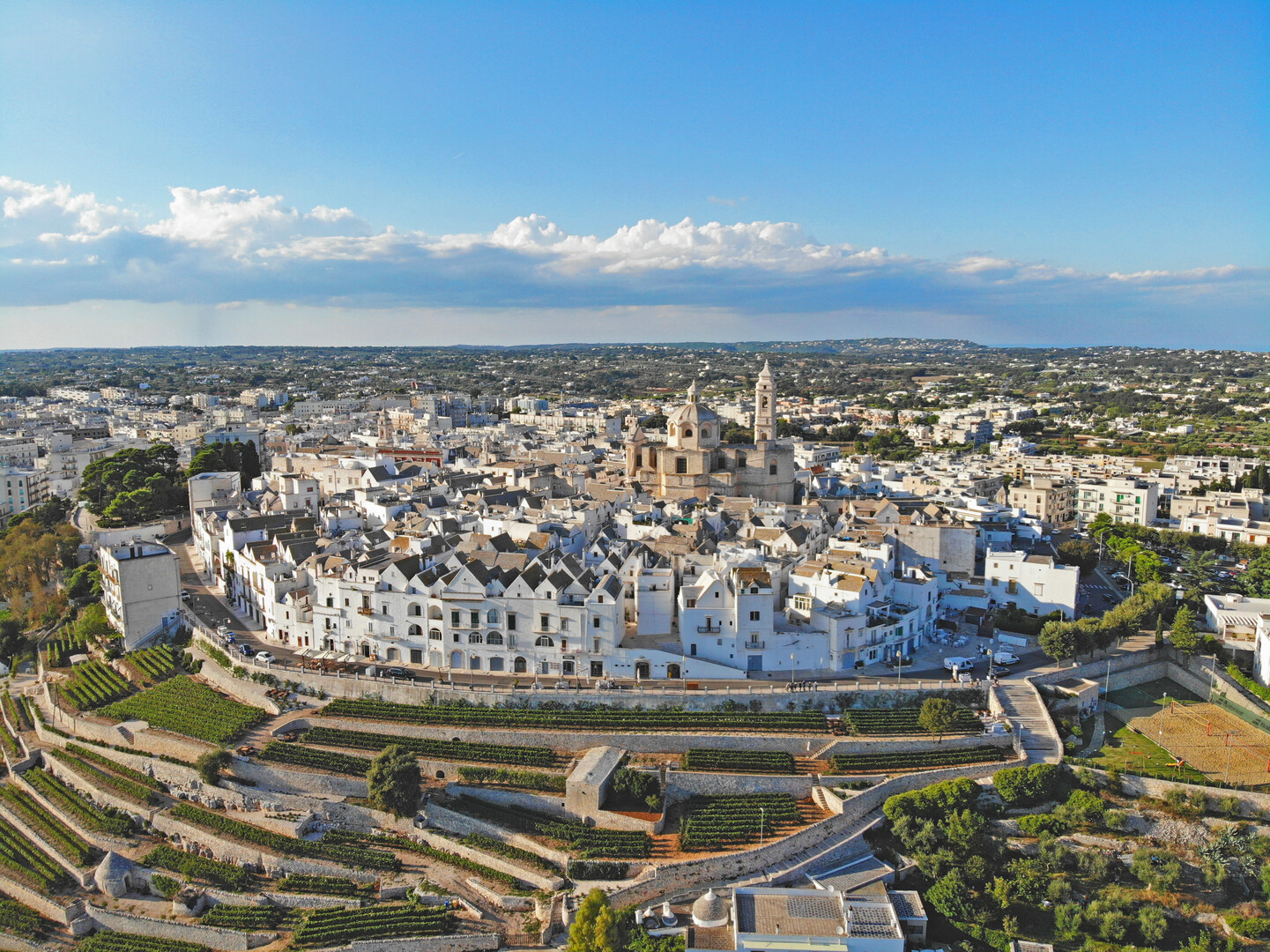Perched in the heart of the Itria Valley, Martina Franca is a baroque jewel wrapped in whitewashed alleys, grand piazzas, and the aromas of Apulian cooking drifting from trattorias. The town is celebrated for its elegant palaces, whimsical balconies, and the world-famous capocollo di Martina Franca, best enjoyed during a summer evening stroll. Each July, music fills the streets during the Festival della Valle d’Itria, adding even more charm to this historic center. Just beyond the town, rolling vineyards and Puglia wineries invite you to slow down with a glass of crisp white or bold Primitivo. We will show you the very best things to do in Martina Franca, from architectural wonders to flavors you won’t forget.
Best things to do in Martina Franca
Wander through Martina Franca’s historic center
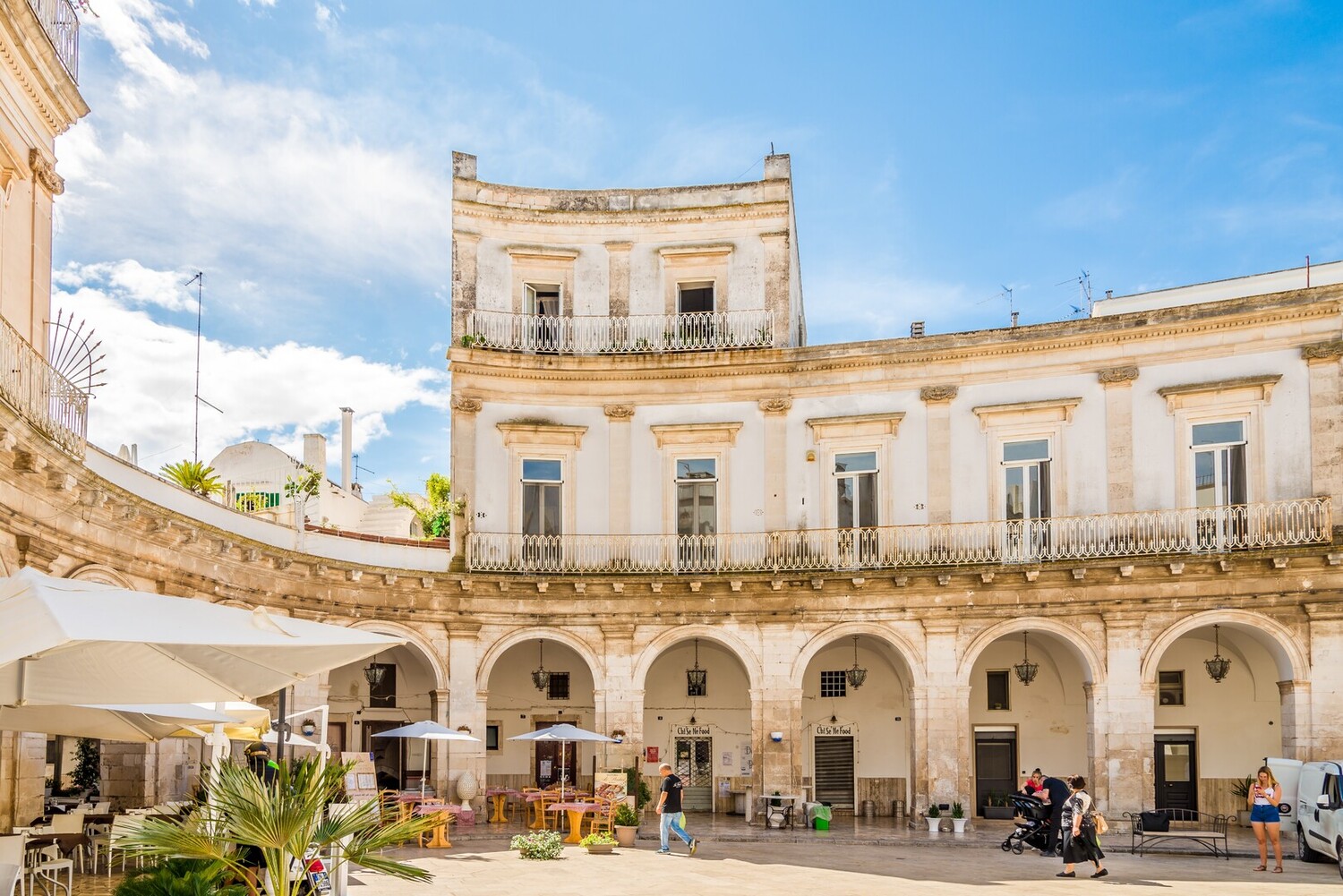
Martina Franca’s historic center is like stepping into a baroque maze where every turn has a surprise waiting. The old city walls still frame winding alleys packed with carved balconies, ornate churches, and buildings that wear centuries of history with style. It’s the kind of place where “getting lost” is the whole point, one alley pulls you into a hidden courtyard, the next drops you in a sunlit piazza buzzing with life.
Visit the Basilica di San Martino
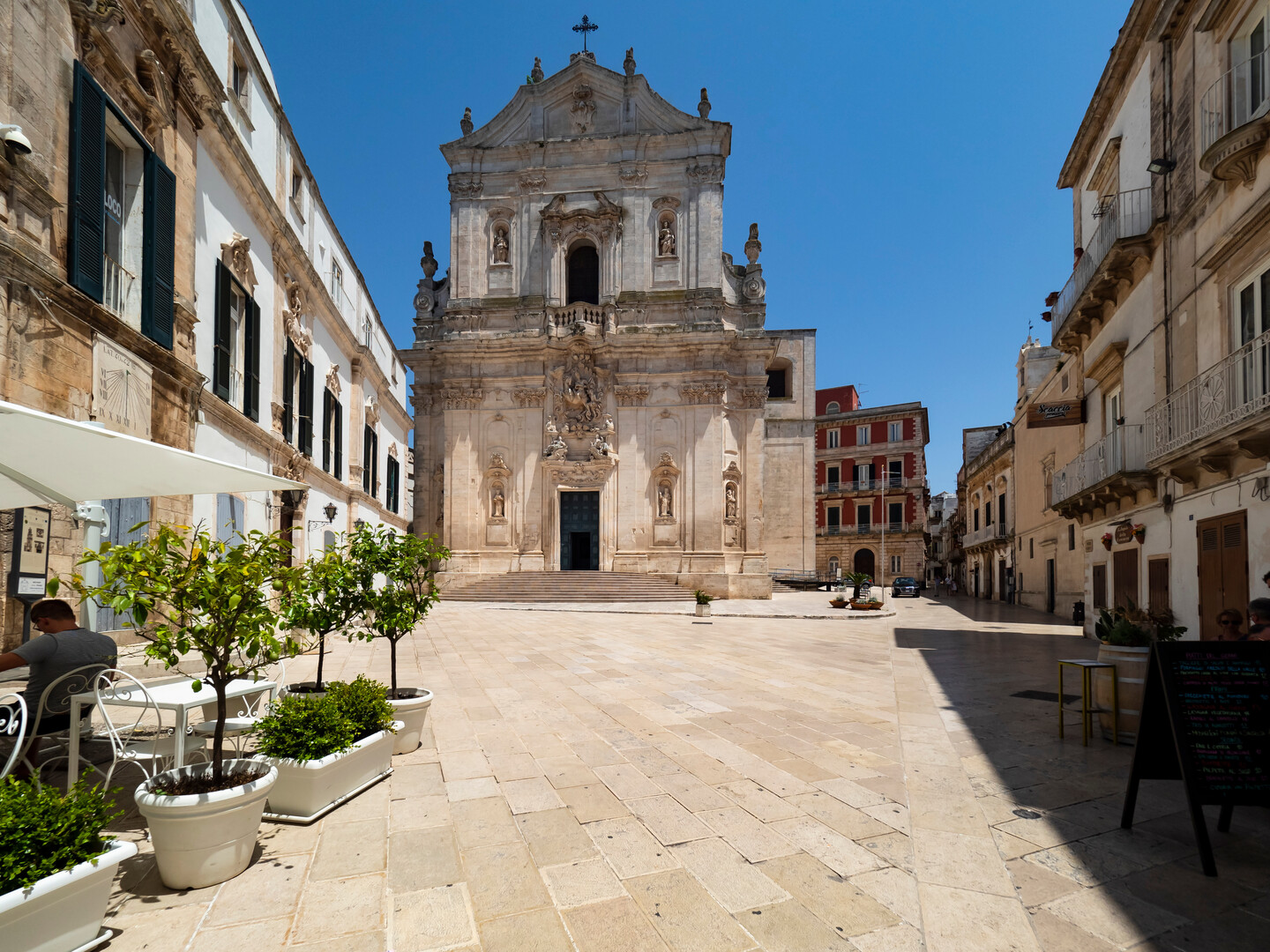
Rising above Piazza Plebiscito, the Basilica di San Martino is Martina Franca’s showpiece. Dedicated to the town’s patron saint, its baroque façade is covered in intricate carvings that deserve a closer look. Inside, sacred relics and richly decorated chapels highlight the town’s deep artistic and religious heritage, making a visit here one of the essential things to do in Martina Franca.
Explore the Doge’s Palace
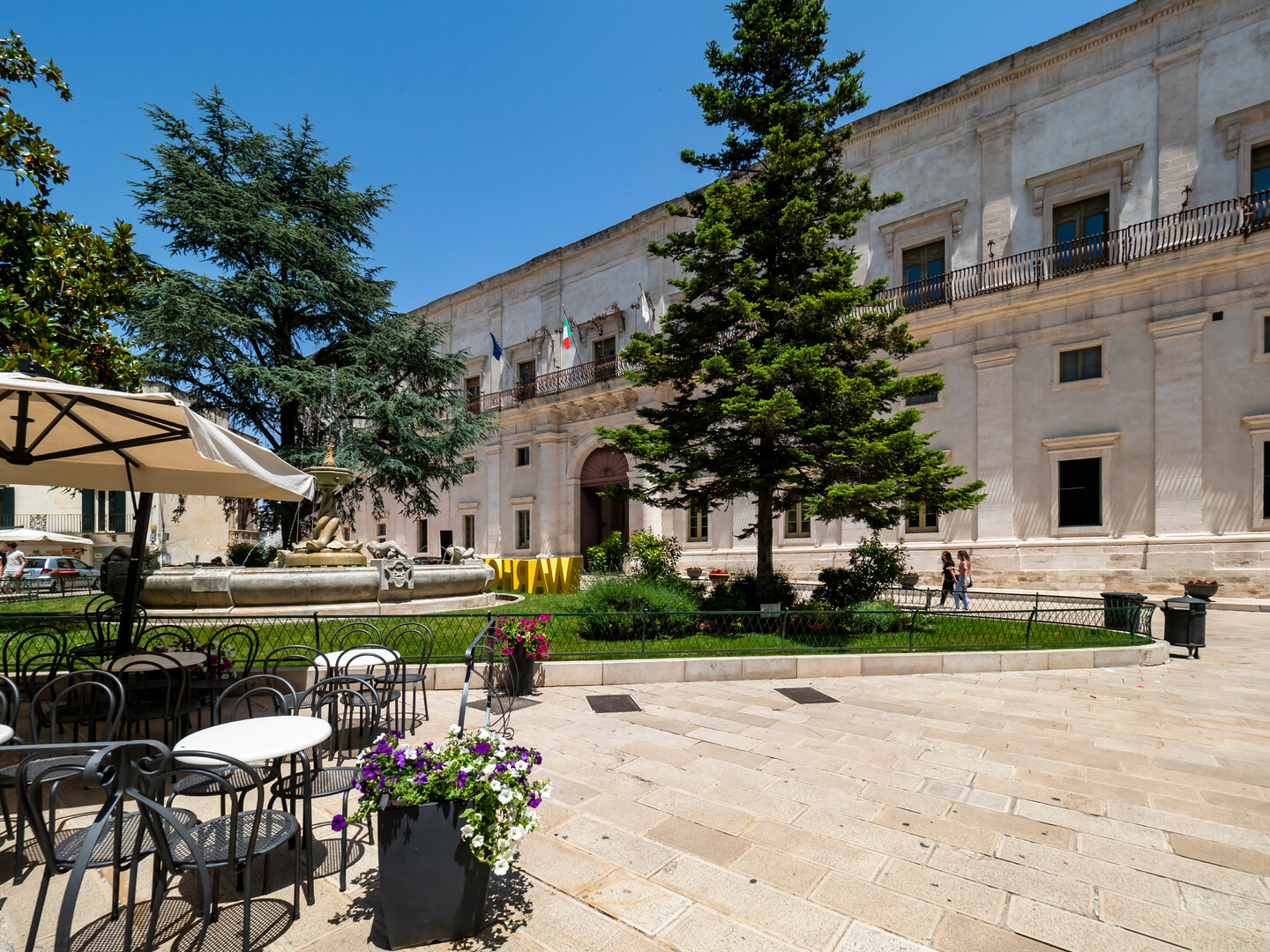
Built in the 17th century, the Palazzo Ducale was once the seat of the Caracciolo dukes and now stands as Martina Franca’s cultural centerpiece. Inside, its grand halls are lined with frescoes and host rotating art exhibits, while parts of the palace house the civic museum. Set right in the town’s historic core, it’s a striking reminder of the wealth and influence that shaped Martina Franca.
Walk to Porta di Santo Stefano
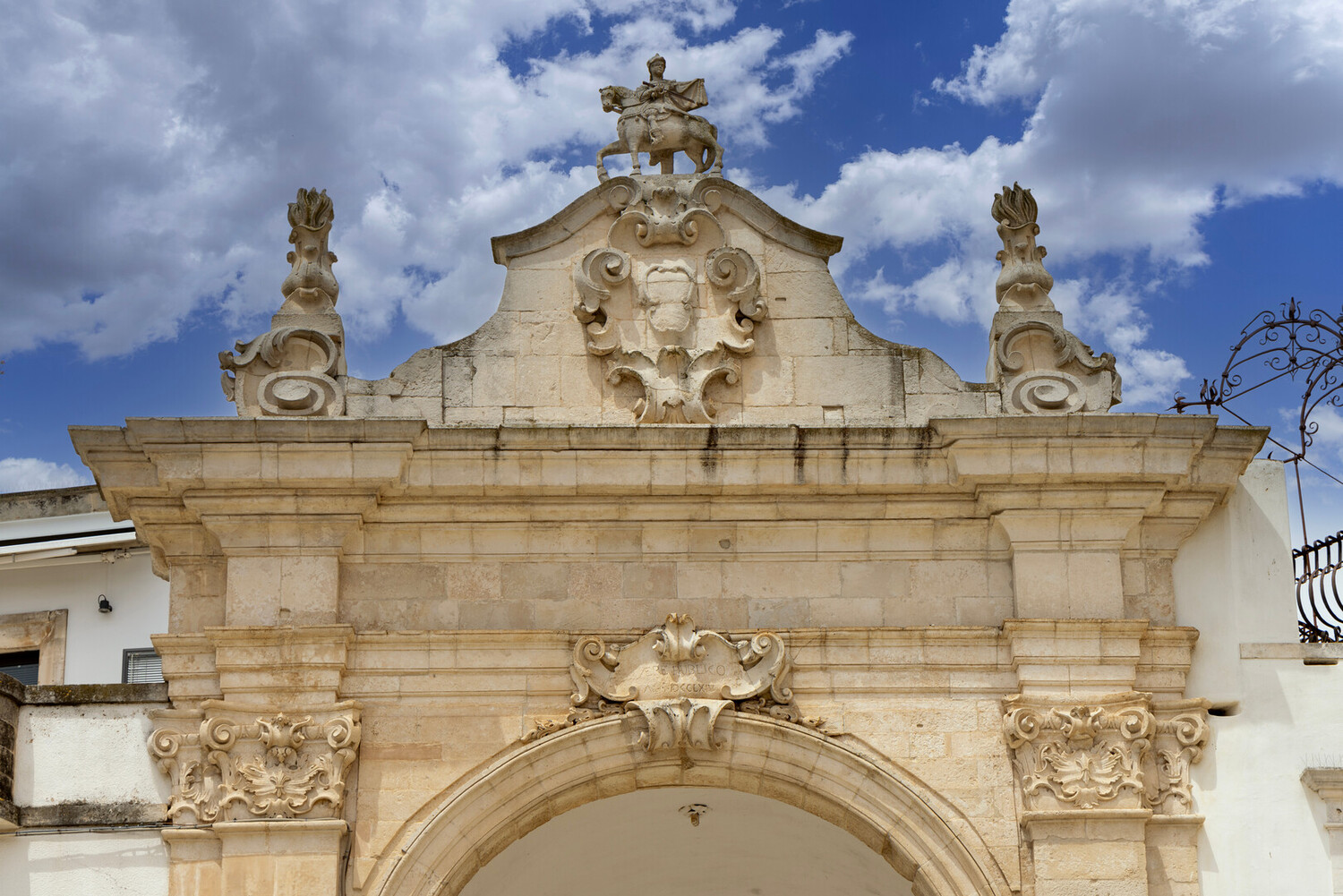
Porta di Santo Stefano, the grand stone gate at the edge of Martina Franca’s old town, once marked the city’s main entrance. Its solid arches still carry the weight of centuries, a reminder of the nobles, merchants, and travelers who once passed through. Today, walking under this historic gateway is among the most evocative things to do in Martina Franca, a perfect starting point for exploring the old town beyond.
Admire Piazza Roma
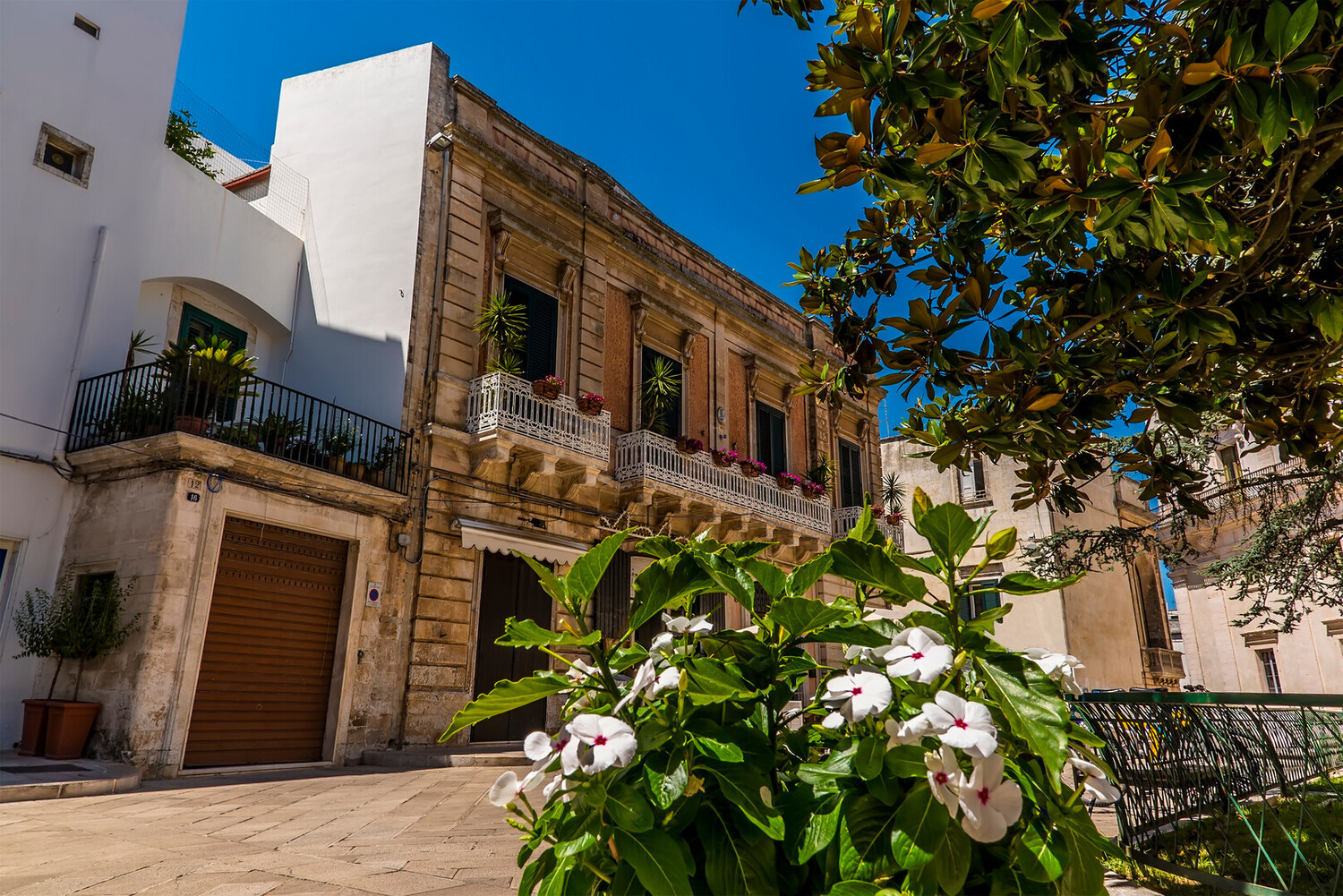
Piazza Roma is Martina Franca’s stage, and the Palazzo Ducale steals the spotlight right in the center. Statues and tidy gardens set the scene, while the square buzzes with locals crossing paths and kids darting between benches. It’s the kind of place where your walk through town naturally begins, and where you’ll probably circle back just to soak in the atmosphere again.
Best things to do around Martina Franca
Explore Locorotondo’s circular charm
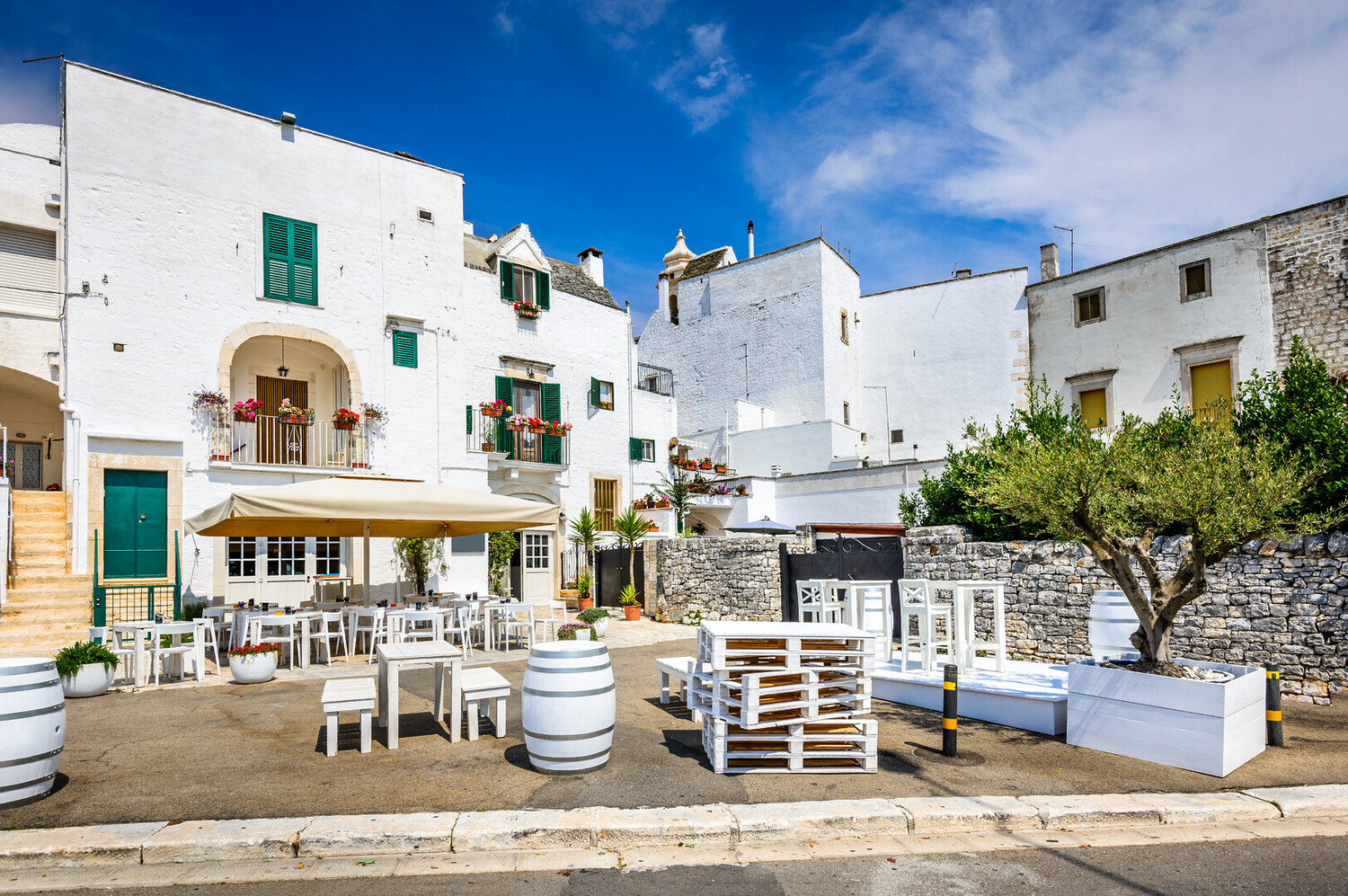
12 minutes from Martina Franca, Locorotondo is a hilltop charmer known for its circular old town, whitewashed houses, and trulli dotting the countryside. Wandering its narrow alleys feels effortless, with every corner offering a new view worth a photo. Beyond the architecture, the town is celebrated for its crisp white wines, and many stops along the Valle d’Itria wine routes invite you in for tastings paired with olive groves and stone villas on the horizon.
Ready for the full picture? Explore our latest guide to things to do in Locorotondo Italy!
Wine and dine through the Valle d’Itria countryside
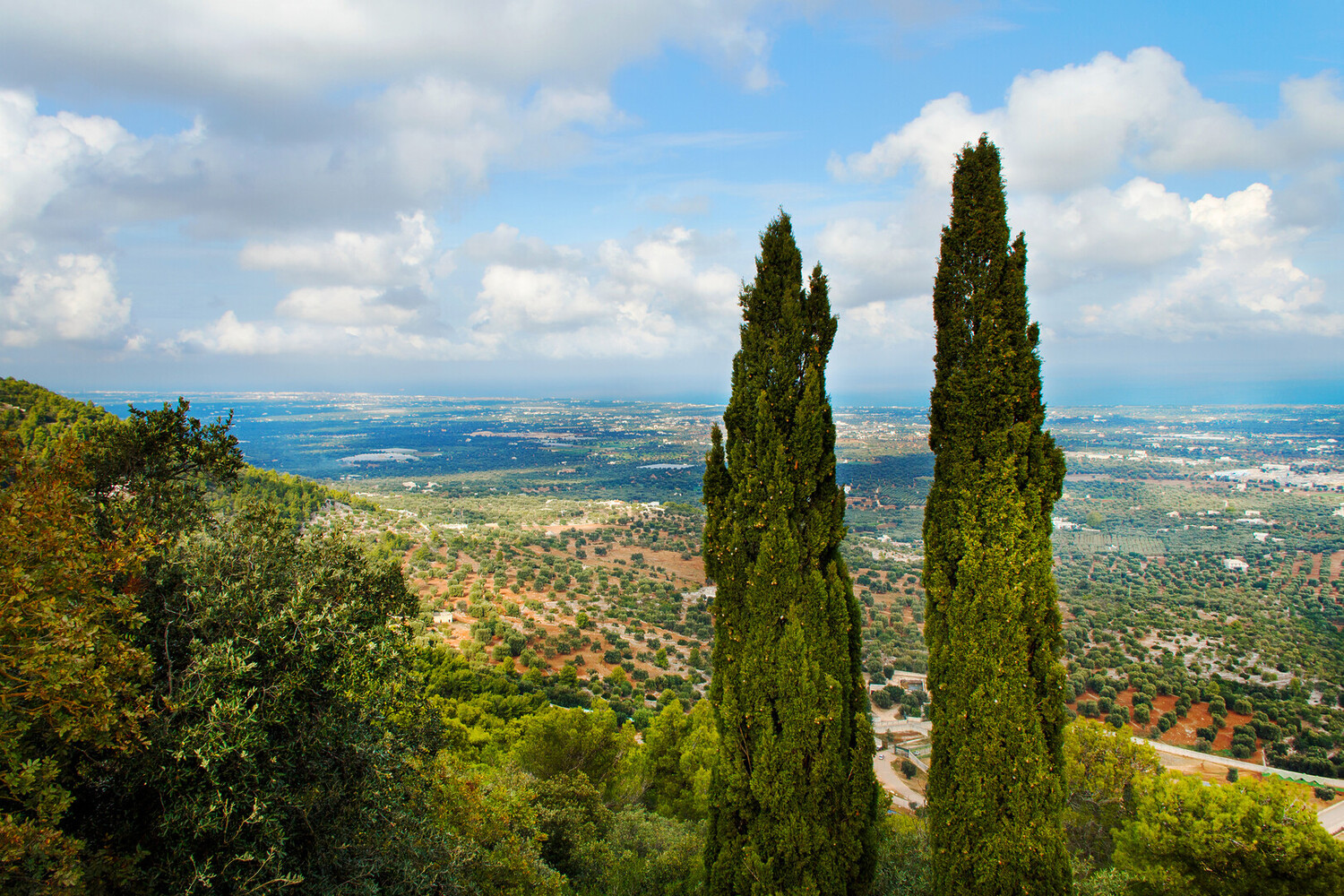
The countryside around Martina Franca is part of the enchanting Itria Valley, a landscape of rolling vineyards, olive groves, and traditional masserie. Just 10–20 minutes from the historic center, estates like Masseria Trulli e Vigne or Masseria San Michele offer wine tastings, farm-to-table meals, and even cooking classes that dive into Apulian cuisine. To truly capture the essence of this region, set out from Martina Franca and visit Itria Valley, where every stop feels like a blend of history, flavor, and countryside beauty.
Wander through the UNESCO magic of Alberobello

20 minutes from Martina Franca, Alberobello is the land of the trulli, cone-shaped stone houses so unique they’ve earned UNESCO World Heritage status. The town’s storybook streets are a playful contrast to Martina Franca’s baroque grandeur, proving just how diverse Puglia really is. Wander through the squares lined with little shops and family-run trattorias, and you’ll stumble on local treats like capocollo, handmade orecchiette, and olive oil pressed just a few miles away.
Ready to go beyond the rooftops? Dive into our full guide to the best things to do in Alberobello.
Taste wine carved in stone

In the heart of Alberobello, Cantina Museo Albea is where wine and history come together. Founded in the early 1900s, the winery is built entirely from stone, with vats carved straight into the rock. Alongside its working cellar, the upstairs museum showcases old tools and photos that tell the story of local winemaking. A visit here ends the best way possible, with a tasting of native Puglian wines like Primitivo and Verdeca, enjoyed in a setting that feels just as authentic as the town’s famous trulli.
Visit Taranto’s maritime legacy
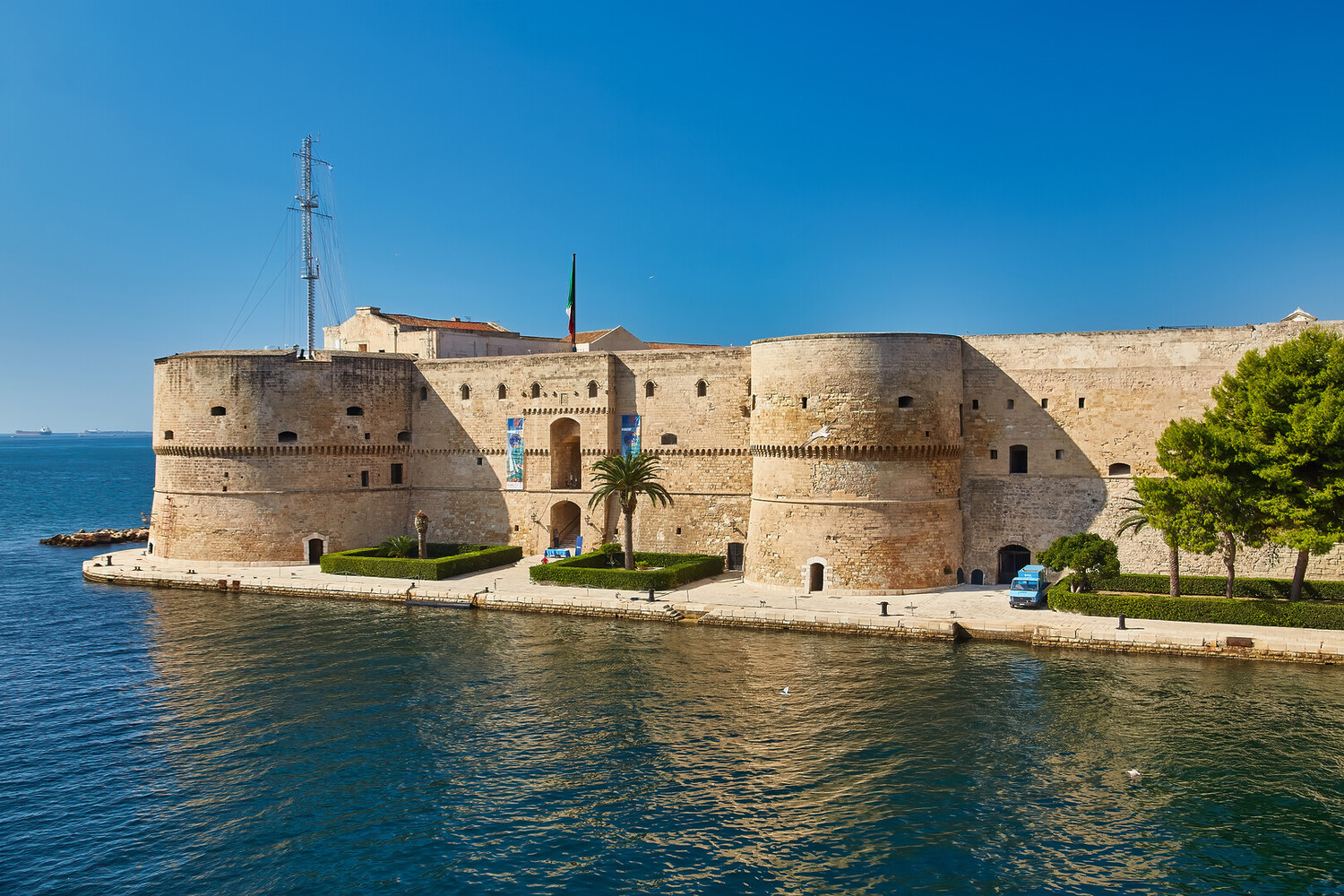
About 30 minutes from Martina Franca, Taranto is a coastal city where history and flavors run deep. Once a powerhouse of Magna Graecia, it still shows off its past through treasures at the National Archaeological Museum (MArTA). The old town is a maze of baroque churches, lively piazzas, and seafood spots overlooking the harbor, perfect for a leisurely stroll. Don’t miss the cathedral or the Aragonese Castle, two landmarks that bring the city’s story to life, and both highlights on any list of the best things to do in Taranto Italy.
Take a journey to Matera
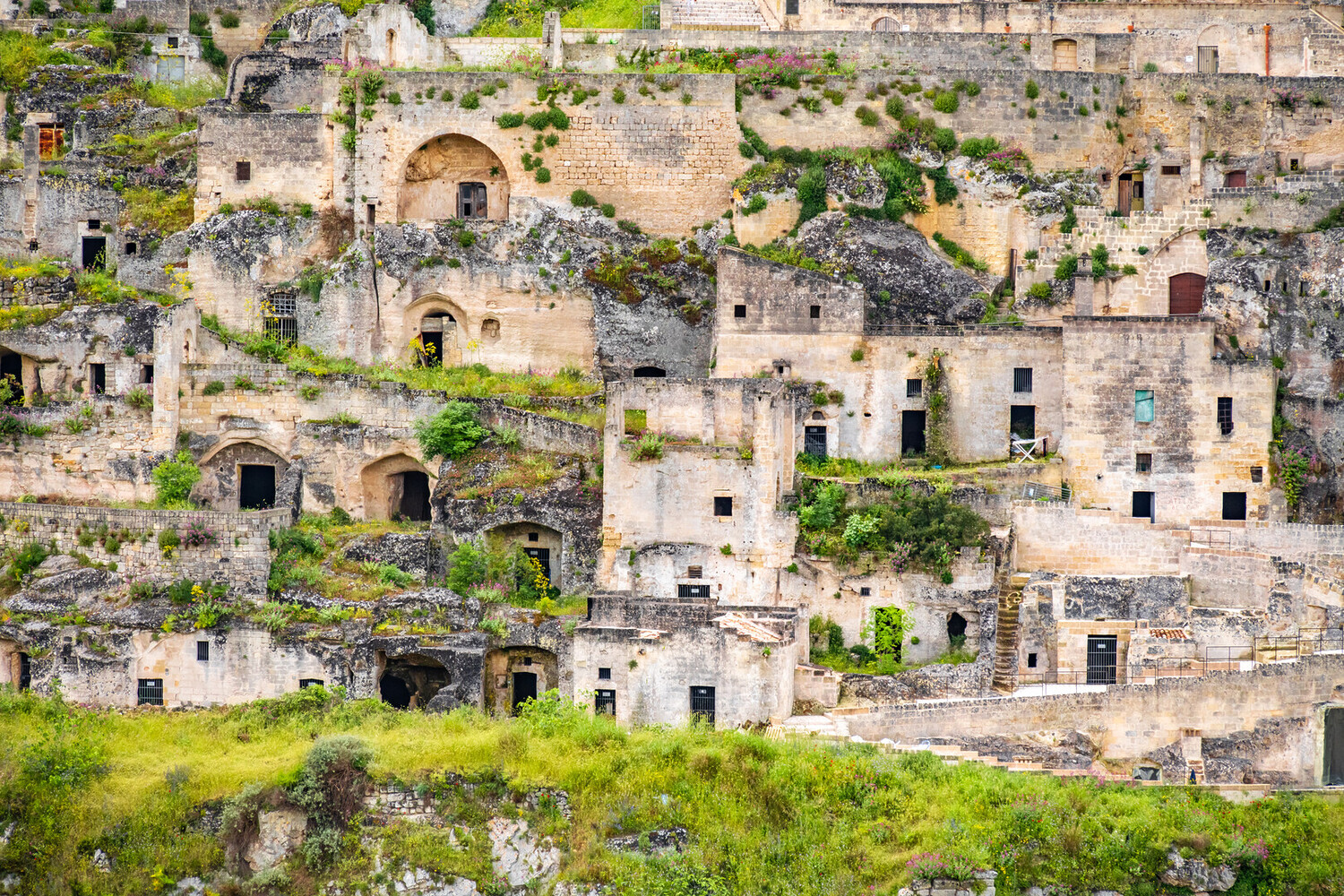
Just over an hour from Martina Franca, Matera in Basilicata is one of Italy’s most extraordinary cities. Famous for its ancient cave dwellings, the Sassi, this UNESCO World Heritage Site is a must for anyone exploring the region. Wander through the winding alleys carved into limestone, visit Matera wineries, step inside rock-hewn churches decorated with frescoes, and admire the striking façades that rise from the cliffs. To truly experience its history, make sure to visit Sassi di Matera, where daily life once unfolded in caves that are now among the oldest continuously inhabited settlements in the world.
Good to know before visiting Martina Franca
Where is Martina Franca located in Italy?
Martina Franca is a charming hilltop town located in the heart of the Itria Valley, in the Puglia region of southern Italy. It’s situated between the provinces of Taranto and Brindisi, making it a strategic point to explore other picturesque towns like Alberobello, Locorotondo, and Ostuni.
Is Martina Franca worth visiting?
Absolutely. Martina Franca is well worth a visit for its beautifully preserved Baroque architecture, historic old town, and vibrant cultural scene. It’s famous for its summer opera festival, whitewashed houses, narrow alleys, and delicious local cuisine. The town also provides a less touristy, more authentic Italian experience compared to better-known destinations.
What is Martina Franca known for?
Martina Franca is known for its stunning Baroque architecture, especially the Basilica di San Martino and Palazzo Ducale. It’s also renowned for the Valle d’Itria Festival, one of Italy’s leading opera festivals. Culinary-wise, it’s famous for capocollo, a traditional cured meat, and for being part of the scenic trulli landscape of central Puglia.
What are the top things to do in Martina Franca?
Top attractions in Martina Franca include exploring the historic old town, visiting Basilica di San Martino, strolling through Piazza Roma and Villa Comunale, touring Palazzo Ducale, and enjoying the scenic countryside. Don’t miss trying the local food, shopping in boutique stores, and attending the Festival della Valle d’Itria in summer.
What’s the shopping scene like in Martina Franca?
Martina Franca offers a delightful shopping experience, especially for those who love fashion and artisanal goods. The town has many boutiques selling locally made clothing, leather goods, ceramics, and gourmet food products such as olive oil and wines. The weekly market is also a great place to browse for fresh produce and local specialties.
What is the weather like in Martina Franca?
Martina Franca enjoys a typical Mediterranean climate with hot, dry summers and mild, wetter winters. Average summer temperatures range from 77°F to 95°F, while winters can go down to around 41°F to 50°F. Spring (April to June) and early autumn (September to October) are ideal times to visit, offering pleasant temperatures and fewer tourists.
What are the best hotels to stay in Martina Franca?
Top-rated accommodations in Martina Franca include:
- Masseria Chiancone Torricella – A historic farmhouse turned 4-star hotel with traditional décor, a pool, and surrounded by nature.
- Park Hotel San Michele – Centrally located hotel with charming rooms and a serene garden.
- Relais Villa San Martino – A luxury hotel offering spa services, elegant rooms, and fine dining.
What are the best restaurants in Martina Franca?
Martina Franca is a culinary gem. Don’t miss these local food spots:
- Osteria del Coco Pazzo – Known for its authentic Pugliese dishes and cozy atmosphere.
- I Templari – Offers delicious regional cuisine with a creative twist, all in a stylish setting.
- Gaonas Officine del Gusto – A favorite for its gourmet take on local ingredients in a rustic-modern ambiance.
- Trattoria Garibaldi – Excellent traditional home-style cooking at affordable prices.
- Pizzeria Jonny – A great place for top-quality pizzas and casual dining.
Is Martina Franca a good start in Puglia?
Yes, Martina Franca is an excellent base for exploring Puglia. It’s centrally located in the Itria Valley, making it easy to day trip to nearby towns like Alberobello (home to the iconic trulli), Locorotondo, Cisternino, Ostuni, and even coastal destinations like Polignano a Mare and Monopoli. Its cooler elevation also makes it a pleasant place to return to after warmer coastal excursions.


